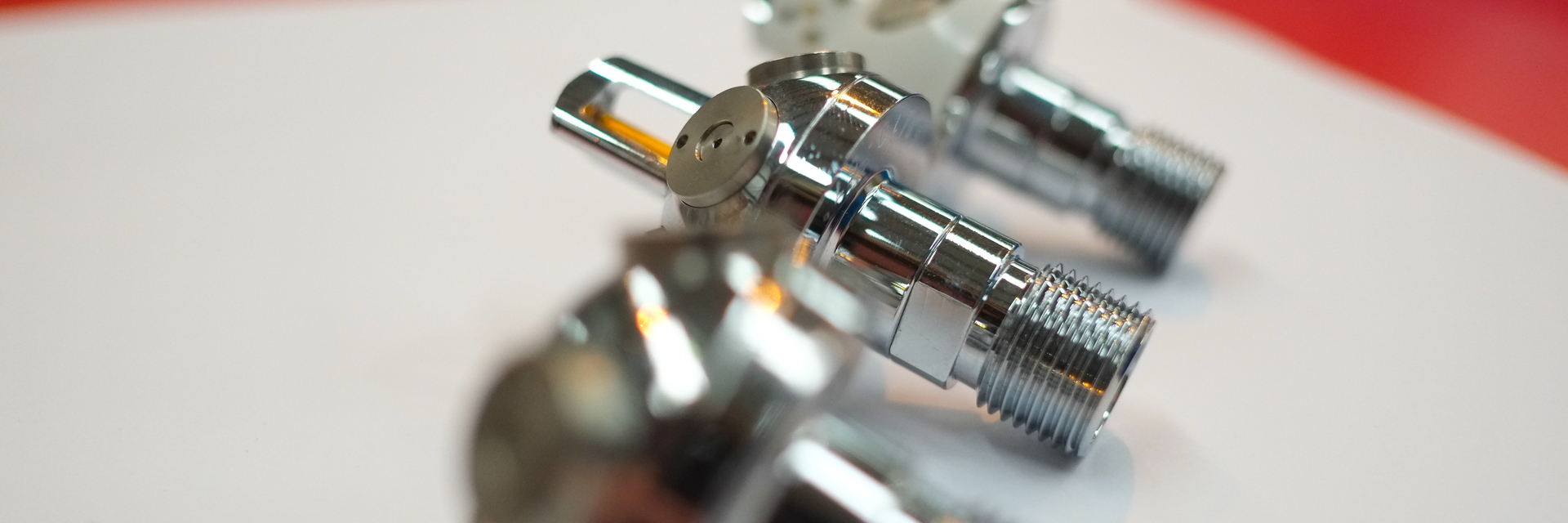What is Water Mist?
Water mist is a highly efficient fire suppression system which uses specially designed nozzles to create a fine mist. Where water mist shows its real advantage is that it combines the fire suppression effect of gas systems (by preventing fresh oxygen reaching the seat of the fire) and traditional sprinkler systems (more efficient way of cooling the fuel / material), using much less water in the process.
A fire relies on the presence of three elements in order to survive: oxygen, heat and combustible material. This is commonly known as the fire triangle. Unlike traditional sprinkler systems, which only remove heat, water mist systems deliver fire suppression by removing both heat and oxygen from a fire by jetting pressurised water through specially designed nozzles. The nozzles atomise the water into micron-sized droplets, which rapidly expand into steam when they come into contact with a fire, depriving the fire of oxygen.
In addition, water mist has a cooling effect on the surrounding area, which prevents reignition of the fire source and any other material that may have caught fire.
Water mist fire suppression is not a new technology, it has been around since the 19th century, and has proved its effectiveness in maritime applications where it has been responsible for saving countless lives. It did not become widely used in land-based applications until the 1970’s when the Montreal protocol banned the use of halon gas as a fire suppressant. The technology was more widely adopted following the 1990 Scandinavian Star Disaster.
Advances in nozzle design like those found in Hydrocore’s water mist nozzles, have now made water mist an effective, efficient and easy to install fire suppression option.
Types of water mist systems
There are three types of water mist systems and the primary difference between these is their operating pressure – Low pressure, Medium Pressure and High Pressure water mist systems.
Low pressure systems operate a water pressure of up to 12.1bar while medium or intermediate pressure water mist systems operate in the pressure range of 12.1bar to 34.5bar. High pressure water mist systems on the other hand operate at more than 35bar pressure.
Hydrocore’s high pressure water mist systems operate at a minimum pressure of around 100 bar and with micro-droplets with the size Dv0.99<1000μm, while Hydrocore’s low pressure water mist systems operate at a nozzle pressure of around 11bar.
Water mist fire suppression is achieved by using precision engineered nozzles which are designed specifically for their intended application. Both high pressure water mist systems and low pressure water mist systems are tested and approved to the same standards and have their advantages and dis-advantages over each other depending upon the risk being protected. In either case, the water consumption is reduced dramatically as compared to traditional sprinklers and have a distinct advantage over conventional fire suppression systems.
With such low water consumption, it is possible to use smaller/small bore pipework (SS316 for high pressure water mist systems), making the system easy to install and maintain. Pipework can be discreetly routed through service ducts without compromising building design and aesthetics.

Hydrocore High Pressure Water Mist Systems

Minimum Discharge Pressure at nozzles: 100bar

System operating pressure: 105bar to 140bar

Droplet size: Dv0.99<1000μm

Power required: 30kW to 240kW

Pump unit discharge capacity: 100lpm to 800lpm

Hydrocore Low Pressure Water Mist Systems

Minimum Discharge Pressure at nozzles: 10bar

System operating pressure: 11bar to 15bar
Extensive Testing
Extensive testing and experience have shown that water mist systems deliver the following advantages:
Ease of maintenance: The use of water without any chemical additives and the use of high pressure stainless steel piping (for HPWM systems) makes the system corrosion resistant, enhancing system life and reducing maintenance costs.
Quick and efficient fire suppression: The atomising effect of water mist offers reliable and effective fire suppression.
Minimal Damage: Atomised mist causes a quick vaporisation effect which limits water and fire damage.
Low downtime: Quick recovery and less downtime compared to other suppression systems which need servicing or recharging post an activation, this means you can get back to work quicker. In a large application, the downtime cost could easily be millions if a facility is shut for a week or more.





